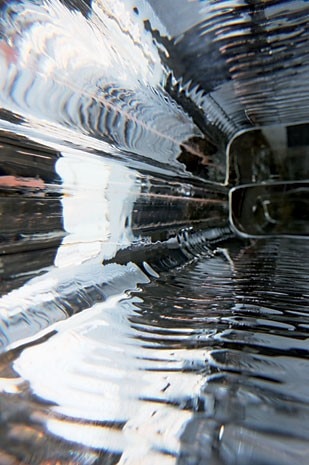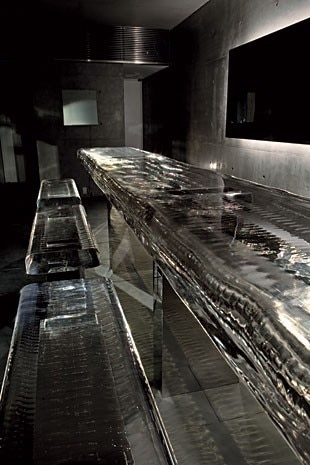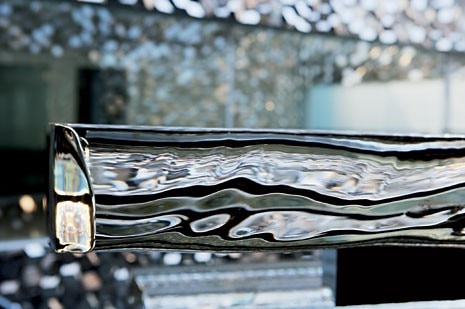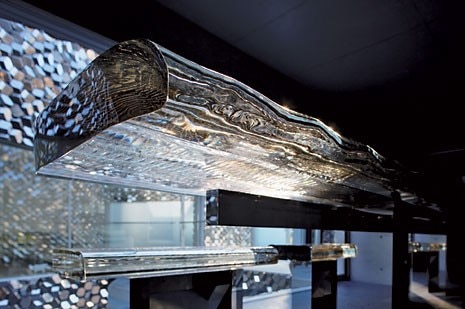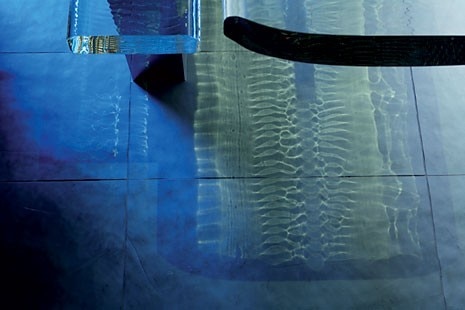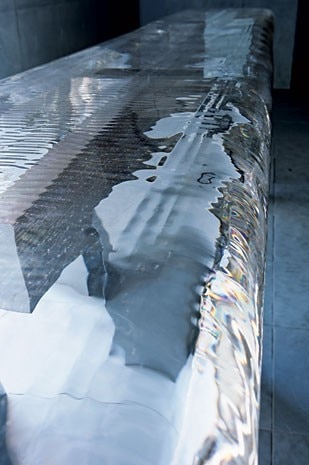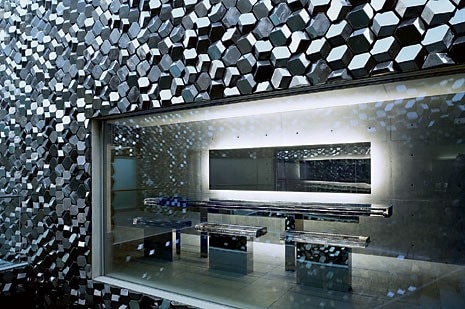Tokujin Yoshioka’s career is a case in point. An exponent of sophisticated exploration of immateriality regarding objects’ appearances, Tokujin started out at a very young age and went on to develop prototypes and numerous displays for Issey Miyake in the ’90s (see his memorable presentation of Miyake’s A-POC line). Then he was practically discovered and revealed to the world by Driade, the first company to exhibit his amazing Honey Pop series (armchairs made of assembled, cut, folded, then unfolded paper) and successively began an intense round of design collaboration for mass- produced furniture.
No exception up to here – this is a common experience with foreign designers who have found their El Dorado in Italy. The exceptionality of the Tokujin case lies in his extraordinary and indefatigable capacity to renew his material-bound inspiration and produce an unstoppable stream of new magic potions that he distils in the confines of his humble home/atelier in Tokyo – potions that seem to flout the rules of conventional physical states. His talent is illustrated by a recent interior made for a fellow townsman, a contemporary art collector. Asked to build a small space in which to entertain guests who come to see the collection, Tokujin imagined invitees sojourning, sitting and conversing on large solid/liquid masses. Benches and a long table (420 centimetres) were crafted from an unusual material that he discovered some time ago and used for another visually deceptive project: “The chair that disappears in the rain”. The material is a type of highly refined glass that was originally used to manufacture giant optical lenses for telescopes and that is worked entirely by hand. By nature, and because of the way it is shaped, the glass has a rippled surface that accentuates the impression of seeing a liquid that has frozen over, rather than an actual solid. When approaching the table, a feeling of instability takes hold of the visitor, who has the sensation of having to sit down in a void, or better on a wobbly, liquid substance that seems as if it could flow away like the water of a Waterfall (the project’s title).
The immateriality of Tokujin’s installation acts as a counterweight to an Olafur Eliasson piece that covers one of the walls in the small private gallery: a natural/artificial landscape of burnished ceramic elements that looks like a bed of solidified crystals. This is where Tokujin succeeds in attaining the most challenging of equilibriums, over which many designers of art spaces stumble headlong: the mating of “functionless” artwork and “functional” interior design in a union where neither is allowed to steal the show. In the meantime, Tokujin is completing a new milieu image for Swarovski’s first flagship store in Ginza, opening this month: another different cascade of crystal, another prestidigitatory trick with the optical glass that he has up his sleeve.
